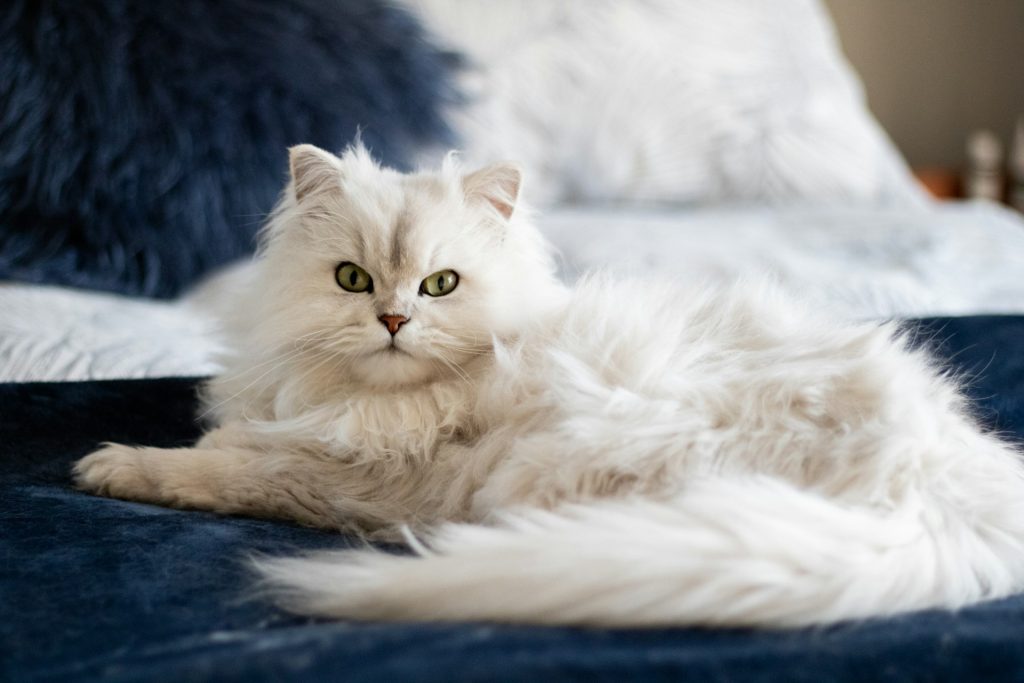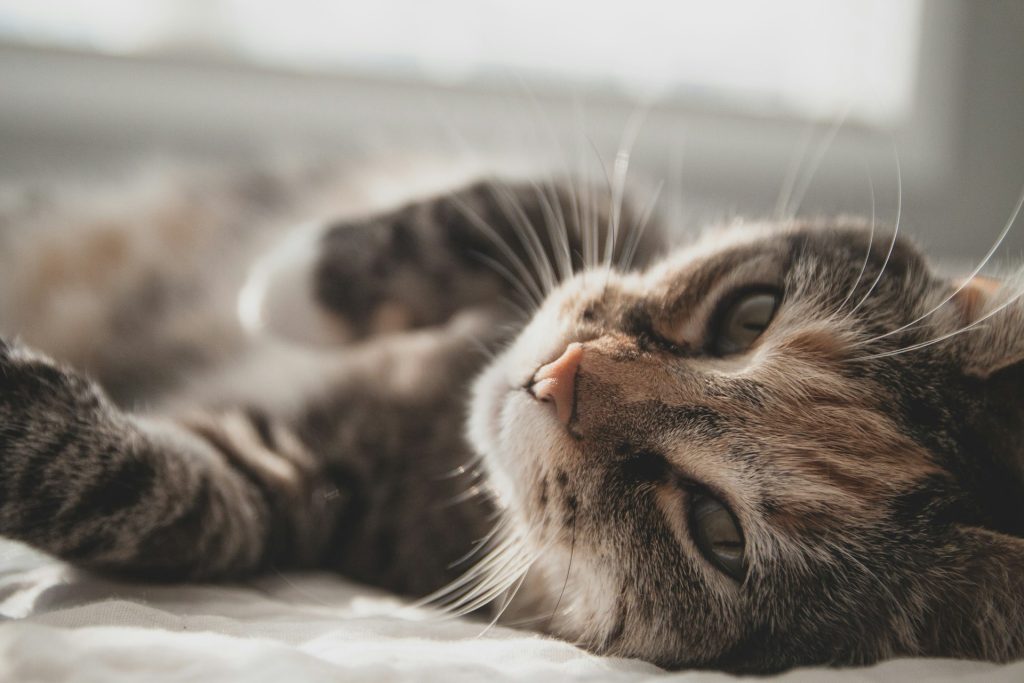Table of Contents
Many cat owners find themselves puzzled by their feline friend’s tendency to lick and then bite them, a behavior that often seems affectionate and aggressive in equal measure. While a bite from a cat can be startling and painful, understanding the subtle cues and cat behavior patterns can reveal much about their intentions. This behavior is not entirely random, and by paying close attention, one can discern the signs that precede such actions, potentially avoiding discomfort and fostering a deeper understanding of their pet’s needs.
Aggressive cats may lash out due to a variety of factors, including fear, discomfort, or the presence of loud noises. However, not all bites are a sign of aggression; some are gentle, almost playful nips that serve as part of their complex communication system. It is essential to recognize the diversity in these behaviors to maintain a harmonious relationship with your feline companion, whose rich emotional life is often expressed through such physical interactions.
Introduction: Deciphering Cat Communication
Decoding the language of cats is a nuanced art, as their methods of communicating with humans involve a dynamic range of vocalizations, body language, and tactile signals. The act of licking followed by a bite can be a form of expression that is misinterpreted by those unfamiliar with feline idiosyncrasies. By learning to interpret these signs, cat owners can better understand their pets’ needs and desires, ultimately reducing the incidence of painful misunderstandings and strengthening the bond between humans and cats.
Interpreting Mixed Signals from Your Feline Friend
When your cat licks and then bites, it may leave you wondering about the meaning behind these mixed signals. The lick, often a gesture of affection and grooming, juxtaposed with a bite, can be confusing. Recognizing the context in which these actions occur is crucial to decoding the message your cat is sending. Observing the surrounding environment and the body language that accompanies these actions will help clarify whether your cat is seeking attention, expressing love, or indicating that it’s time for you to stop a particular behavior.
The Dance of Affection and Aggression in Cats
The delicate balance between affection and aggression in cats is exemplified by the dance of licks and bites. Licking, a behavior rooted in maternal care and social bonding, is often extended to their favorite humans as a sign of trust and closeness. When these cat licks transition into bites, it may simply be a continuation of this grooming behavior, an instinctual act that can involve gentle nibbles on areas that are difficult to reach. Understanding this interplay is key to appreciating the complexities of your cat’s social interactions.

The Underlying Motives of a Cat’s Lick and Bite
The motives behind a cat’s lick and bite can be multifaceted, often stemming from a combination of affection, play, and instinctual behavior. These actions, while sometimes surprising, are rarely without reason and serve as a window into the emotional and physical world of your cat.
Affectionate Gestures: When Love Nibbles Occur
When a cat licks and then bites, it is often a demonstration of affection. These love nibbles are a common way for cats to express their fondness for their human companions. If your cat is showing this behavior, they might be seeking attention or attempting to bond with you, using their mouth as a tool for communication. Understanding this aspect of cat behavior can help you appreciate the nuances of their love language.
The Emotional Bond and Cats’ Love Bites
The emotional bond between cats and their owners can be deepened through understanding and responding to cats’ love bites. These gentle bites are not meant to cause harm but rather to signal a comfortable level of intimacy. When your cat licks and then offers a soft bite, they are not only grooming you but also marking you as part of their social group, an honor that indicates their trust and affection for you.
Playful Pounces: Your Cat’s Invitation to Interact
Oftentimes, when cats lick then bite, they are signaling their desire to engage in play. This behavior can be an invitation for interactive games, which are essential for a cat’s mental and physical well-being. Recognizing when your cat is in the mood for play can be discerned by their body language, such as ears and whiskers pointed forward, signaling excitement and readiness for fun.
Identifying and Engaging in Play With Your Cat
Identifying the signs of playfulness in your cat can enhance the quality of your interactions. When cats lick and display playful body language, such as ears and whiskers perked up, they are often in a mood for activity. Engaging with them through games and play sessions is not only enjoyable but also provides necessary stimulation, contributing to their overall health and happiness.
The Psychological Perspectives of Cat Behavior
Understanding the psychological underpinnings of cat behavior can provide insightful perspectives into why cats lick and bite. These actions are not merely physical reactions but are deeply rooted in a cat’s cognitive and emotional world, reflecting their personality, needs, and feelings.
Overstimulation: Recognizing the Signs
One common cause for a lick and bite from your cat is overstimulation. While your cat may initially enjoy being petted, they can quickly reach a threshold where the sensation becomes too intense. This sensory overload can trigger a reflexive bite as a way to communicate that they need a break from the interaction.
Strategies to Prevent Overstimulating Your Companion
To prevent overstimulating your cat during petting sessions, it is important to be attentive to their body language and responsive to their cues. Limiting the duration of petting and offering breaks can help maintain a comfortable level of stimulation for your cat, preventing the need for them to resort to biting as a means of communication.
Stress and Anxiety: Understanding Feline Tension
Stress and anxiety can also play a significant role in why cats lick and, at times, bite. Cats are sensitive creatures, and changes in their environment or routine can lead to heightened tension, which may manifest in increased grooming behavior or nipping. Recognizing the signs of stress in your cat is the first step toward creating a calming and secure atmosphere for them.
Methods to Alleviate Your Cat’s Stress
There are several effective methods to alleviate stress in cats that can help reduce the occurrence of anxiety-related licking and biting. Providing a stable environment, consistent routines, and dedicated areas for rest, such as cozy cat beds and hideaways, can significantly reduce your cat’s stress levels.
The Physiological Reasons Behind Licking and Biting
Examining the physiological reasons behind why cats lick and bite reveals a complex interplay between instincts and learned behaviors. These actions serve various purposes, from grooming to communication, and are influenced by a cat’s sensory experiences and innate tendencies.
Grooming: Your Cat’s Natural Instinct to Lick
Cat licks are a fundamental part of feline behavior, indicative of both self-grooming and social interaction. When your cat engages in licking, it is often a sign of comfort and a means to cleanse their fur, mirroring the meticulous care they take with their grooming rituals. If your cat licks and bites you, it is generally a form of endearment, akin to the grooming habits shared among feline siblings and favored humans. Such behavior suggests a strong bond, marking you as a trusted member of their social circle.
When Grooming Translates Into Light Bites
Occasionally, the act of grooming can lead to gentle nibbles or light bites. This behavior might stem from the cat’s instinct to remove tangles from their fur by biting. When directed towards you, these light bites can signify an extension of their grooming behavior, a sign that they are caring for you as they would for themselves or another cat. Understanding this can help you appreciate these moments as a form of affection rather than an act of aggression.
Sensory Overload: Why Your Cat May Suddenly Bite
When cats lick and bite seemingly out of nowhere, it can be attributed to sensory overload. It’s a feline’s natural response to too much stimulation. While enjoying the affection, a cat’s senses can quickly become overtaxed, leading to an impulsive bite. Observing your cat’s body language for twitching tails or rotating ears can help you anticipate and prevent a bite before it occurs.
Interactions and Their Sequences
Understanding the sequence of a cat’s interactions, such as licking followed by biting, is key to interpreting their complex behavior. The order of these actions can provide insights into their emotional state, whether they’re seeking attention or signaling discomfort. By closely observing these patterns, owners can better respond to their furry companions’ needs.
Analyzing the Order: Does Licking Before Biting Matter?
While the order of lick and bite may not significantly alter its meaning, it does reflect a cat’s intent. Whether they lick and then bite or vice versa, cats are trying to communicate. Deciphering this message relies on the context and the cat’s body language.
Sequence Interpretation: What Your Cat’s Actions Tell You
Each action sequence a cat displays, from licking to biting, is a form of communication that can reveal their desires or discomforts. Recognizing these patterns enables owners to better understand and meet their feline friends’ needs, enhancing the bond between them.
The Role of Natural Instincts in Cat Behavior
Domestic cats retain ancestral instincts, and their behaviors often reflect these primal urges. Licking and grooming mirror nurturing behaviors while biting can be an echo of their hunting past. Understanding these natural drives is crucial for interpreting and managing your cat’s actions.
Predatory Instincts: When Domestic Cats Exhibit Wild Traits
Cats’ natural predatory instincts can manifest in their play and interactions with humans. Even gentle companions may display a sudden bite, reminiscent of how they would grasp prey in the wild. Recognizing this behavior as instinctual helps in responding appropriately.
Subduing the Hunter: Redirecting Your Cat’s Predator Instincts
Channeling your cat’s predatory instincts through play can prevent unwanted biting. Providing toys that mimic prey allows them to express their natural behaviors safely. Engaging in regular play sessions can satisfy their hunter’s drive and reduce the likelihood of using their teeth on you.

Managing Your Cat’s Biting Behavior
Effectively managing a cat’s biting behavior involves understanding the underlying causes. Whether motivated by affection, play, or stress, responding appropriately can help mitigate the behavior while maintaining a loving relationship with your pet.
Proactive Responses to Gentle Bites
Responding to gentle bites with a firm “no” and redirecting your cat’s attention to a toy can help them learn appropriate behavior. Consistent and gentle correction reinforces which behaviors are acceptable, reducing the frequency of these love nibbles.
Techniques to Deter Your Cat From Biting
To deter your cat from biting, provide ample playtime, use toys instead of hands for play, and give them a calm environment. Consistency in these techniques will help your cat understand that biting is not an acceptable form of interaction.
Dealing With Aggressive Bites
Addressing aggression in cats requires identifying the triggers and removing them when possible. Providing a safe space and maintaining a routine can help alleviate stress that may lead to aggressive behavior.
Understanding Aggression and When to Seek Professional Help
If a cat’s aggression escalates or becomes unpredictable, it’s important to seek professional help. A veterinarian or a feline behaviorist can assess the situation, rule out any medical issues, and guide managing the aggressive behavior safely.
Final Insights: Embracing the Complexity of Cat Behavior
Feline behavior is a tapestry woven from affection, independence, and instinct. Understanding the nuances of why a cat licks and bites is part of embracing this complexity. While these behaviors can sometimes puzzle or frustrate owners, they are often expressions of love or a cat’s way of communicating needs. By observing, learning, and responding with empathy, cat owners can appreciate the unique language of their feline friends and cultivate a rewarding companionship.
The Delicate Balance of Feline Affection and Independence
Cats strike a delicate balance between seeking affection and maintaining their independence. When a cat licks and then bites, it can be a sign that the cat is showing affection or asking for it on its terms. Recognizing and respecting this balance is key to a harmonious relationship with your cat. By allowing your cat to initiate and control the level of interaction, you honor its autonomy while still nurturing the bond you share.
Emphasizing Patience and Consistency in Training
Training a cat to curb biting behavior requires patience and consistency. Reinforce positive behavior with treats and affection, and calmly withdraw attention when biting occurs. Over time, your cat will associate gentle interaction with positive outcomes, leading to a reduction in biting. Remember that each cat is an individual, and what works for one may not work for another. Patience and persistence, coupled with a deep understanding of your cat’s personality, will yield the best results.
Conclusion: Embracing the Quirks of Your Feline Friend’s Behavior
The quirks of your feline friend’s behavior, including the puzzling mix of licking and biting, are all part of the rich experience of cat ownership. While it’s important to manage any behavior that becomes too intense or problematic, recognizing these actions as part of your cat’s natural expression is crucial. With careful observation and a willingness to learn, cat owners can identify the needs behind the behavior and foster a loving, respectful relationship with their furry companions.
Strengthening the Bond: Recognizing and Responding to Your Cat’s Needs
Strengthening the bond with your cat involves recognizing and responding appropriately to its needs. If your cat licks you and then bites during petting, it may be signaling a need for a break. Respecting this request by pausing and giving your cat some space can prevent overstimulation. Observing these subtle cues allows for a deeper understanding of your cat’s comfort levels, leading to a stronger, more trusting relationship.
The Joy of Comprehending Your Cat’s Unique Language
Comprehending the unique language of your cat brings joy and depth to the human-feline relationship. Through patient observation and interaction, you can learn to distinguish between playful nips and messages of affection or frustration. By responding with empathy and adjusting your behavior to meet your cat’s needs, you can enhance mutual understanding and enjoy the special bond that comes from truly knowing your feline companion.

Hi, I’m Zoey, a devoted mom to two charming Siamese cats. My passion lies in assisting fellow pet owners in providing optimal care for their cats. On CatsEuphoria, I share practical tips and relatable stories, inviting you to join me in appreciating the authentic bond between humans and our beloved feline companions.




